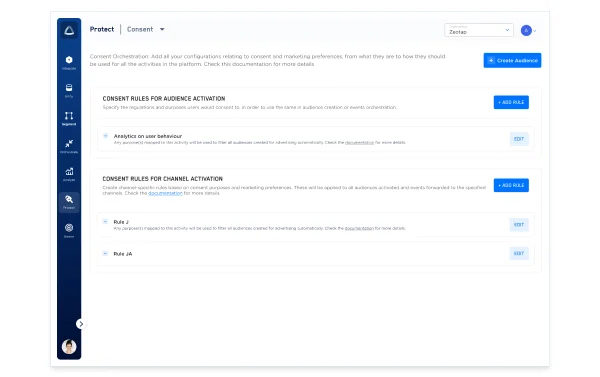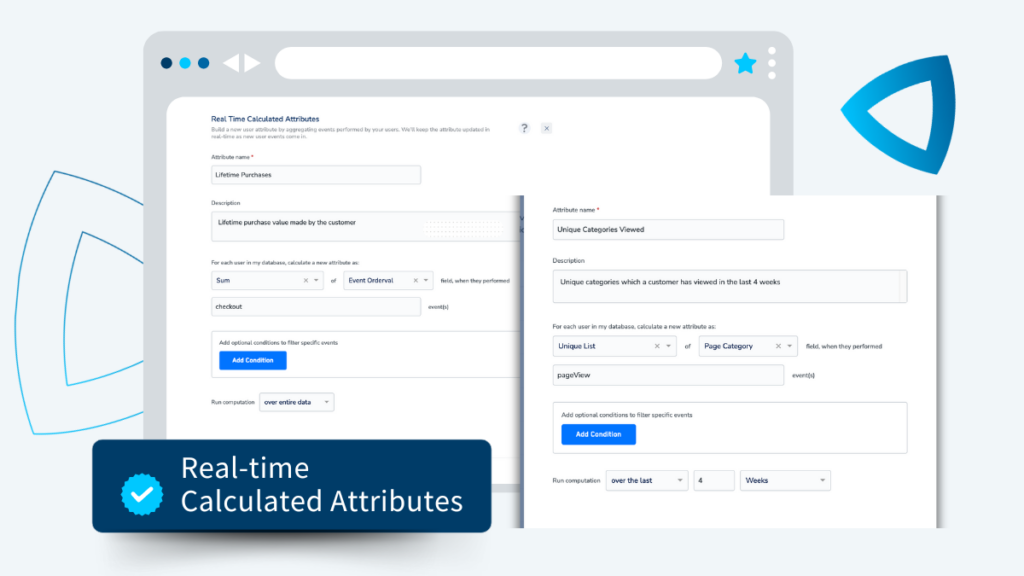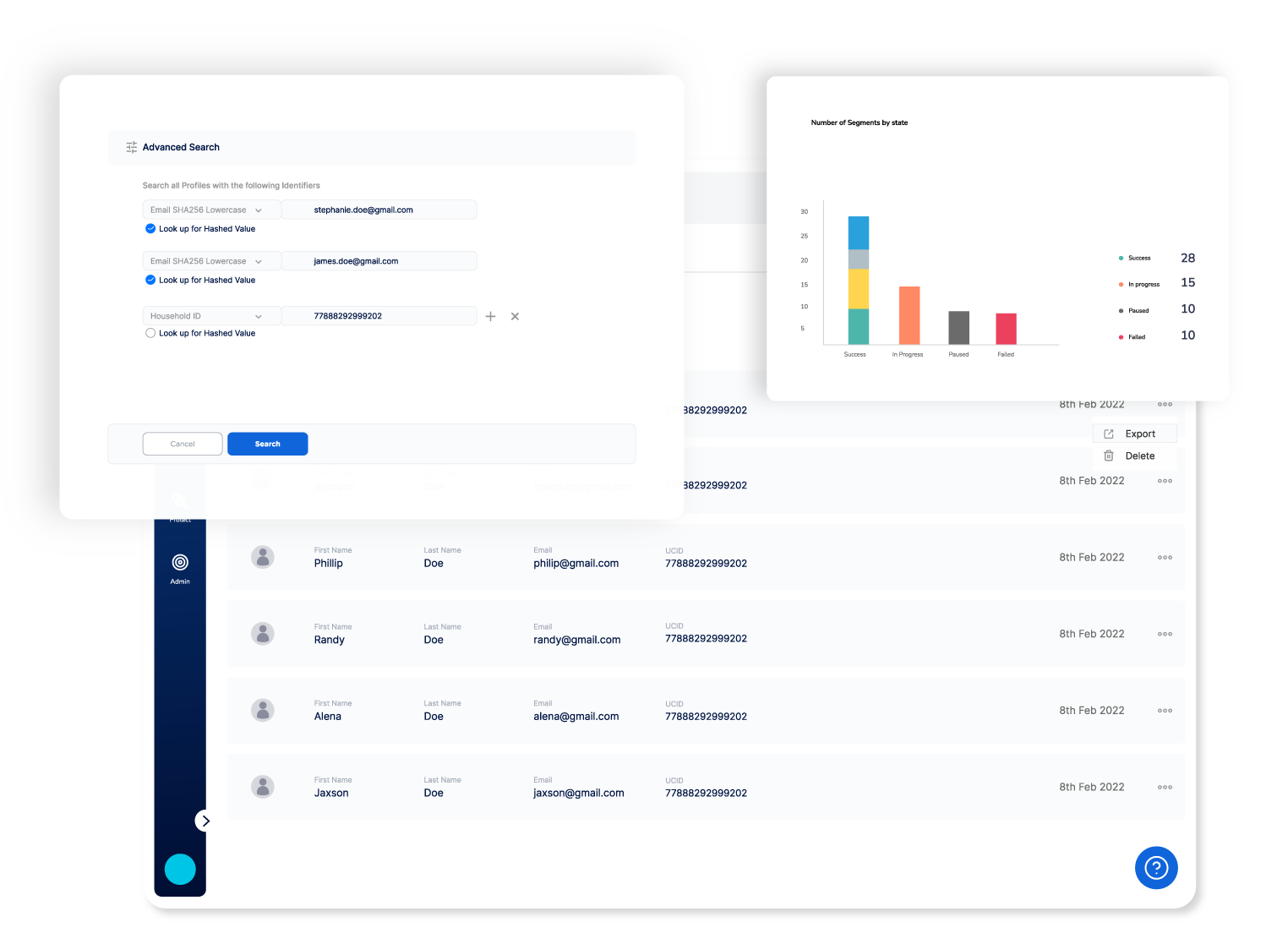7 Key Customer Data Platform (CDP) Trends in 2024


In the digital age, the ability to effectively manage and utilise customer data is crucial for business success. By integrating data collection processes, a Customer Data Platform (CDP) provides a comprehensive view of customer behaviour, allowing for more personalised and targeted marketing efforts. As we approach 2024, the landscape of CDPs is evolving rapidly, driven by technological advancements and changing consumer expectations.
This article delves into the current status of CDPs, explores the most significant customer data platform trends shaping the future of data collection and customer engagement, and discusses the transformative role of AI.
Current Status of CDPs
CDPs serve multiple use cases across industries, including personalised marketing, customer experience enhancement, and advanced analytics. Retailers leverage CDPs to tailor marketing campaigns based on real-time purchasing behaviour, while financial institutions use them to improve customer service and cross-selling by understanding customer preferences and needs.
Overall, CDPs have become indispensable in today’s data-driven marketing landscape. As organisations strive to provide personalised experiences, CDPs aggregate and unify customer data from various sources, enabling a single, comprehensive customer view. According to recent statistics, the global CDP market is expected to reach $10.3 billion by 2026, growing at a compound annual growth rate (CAGR) of 25.4% from 2021.
7 Key CDP Trends for 2024
As Customer Data Platforms continue to evolve, several key trends are emerging that are poised to shape the future of data-driven marketing and customer engagement. These trends reflect advancements in technology, shifts in consumer expectations, and evolving regulatory landscapes.
1. CDPs leveraging AI
AI is becoming a cornerstone technology in the development of CDPs, enabling platforms to deliver more sophisticated data analytics and automation capabilities. By leveraging machine learning algorithms, CDPs can now analyse vast datasets to identify patterns, predict customer behaviour, and optimise marketing strategies in real-time. This not only improves the accuracy and relevance of marketing campaigns but also enhances customer experiences by providing timely and personalised content.
For instance, AI can help identify the optimal times to send marketing communications, predict product preferences, and even automate the creation of targeted advertisements.
2. Enhanced focus on user data protection
With data breaches and privacy concerns becoming more prevalent, there is an increased focus on data protection within CDPs. This trend is driven by stringent regulations such as the General Data Protection Regulation (GDPR) in Europe.
CDPs are incorporating advanced data security features, including encryption, anonymisation, and secure data transfer protocols, to safeguard sensitive customer information. Moreover, enhanced consent management tools are being integrated to ensure that businesses comply with regulatory requirements and respect customer privacy preferences, which are critical for maintaining trust and loyalty.
Zeotap CDP, for example, is a privacy-focused platform that integrates consent choices into customer profiles, creating a comprehensive view that combines online and offline data to enhance customer experiences and ensure regulatory compliance. It provides tools for easily managing data subject requests, including bulk deletion to comply with GDPR’s Right to be Forgotten, along with comprehensive logging for audits. The platform’s DIY consent control centre allows for the quick setup of consent and marketing preference rules, automating compliance with GDPR and other global privacy regulations.

The ability to process and analyse data in real-time is becoming a crucial capability for CDPs. Real-time data analysis and processing allows businesses to capture and respond to customer actions as they happen, providing immediate insights into customer behaviour.
This capability is particularly valuable in dynamic environments such as e-commerce, where timely engagement can influence purchasing decisions. Real-time data processing also supports dynamic content delivery, enabling brands to personalise website experiences, email marketing, and other digital interactions based on the latest customer data.
Zeotap CDP exemplifies this with its real-time journey orchestration and calculated attributes features, allowing marketers to enrich customer profiles and tailor marketing strategies as new data becomes available. By identifying shifts in customer interests—such as exploring new product categories—marketers can trigger specific, relevant engagements that enhance customer experience and drive conversions.

4. Growing demand for multichannel capabilities
Consumers today interact with brands across a variety of channels, including websites, mobile apps, social media, and in-store experiences. To provide a consistent and seamless customer experience, businesses require CDPs that can integrate data from multiple channels and touchpoints.
This multichannel capability enables a unified customer view, allowing brands to track customer journeys, understand cross-channel behaviours, and optimise interactions. For example, a customer’s online browsing history, social media engagement, and in-store purchases can be combined to provide a comprehensive understanding of their preferences and behaviours.
5. Priority on integrating CDP with various marketing services
Integration with other marketing and business systems is becoming a top priority for CDPs. Seamless integration with Customer Relationship Management (CRM) systems, marketing automation platforms, and analytics tools enables businesses to leverage comprehensive customer insights across all marketing activities. Zeotap CDP, for example, seamlessly integrates your customer data with all your key business tools through ready-made integrations, offering reliable, actionable data.

This interconnected approach ensures that data flows smoothly between systems, providing a consistent and accurate view of customer interactions. It allows for more efficient data management, streamlines workflows, and enhances the effectiveness of marketing campaigns by ensuring that all customer data is utilised to its fullest potential.
With major web browsers phasing out support for third-party cookies, CDPs are adapting by developing new methods for tracking and engaging with customers. These methods often involve leveraging first-party data, which is data collected directly from customers through owned channels like websites and apps. First-party data is considered more reliable and privacy-friendly, as it is collected with the customer’s knowledge and consent.
In addition to first-party data strategies, CDPs are exploring alternative identifiers such as device IDs and contextual targeting to maintain addressability in a cookieless world, ensuring that brands can continue to deliver personalised and targeted advertising.
7. Cost-effective CDPs offering strong ROI
As businesses face economic pressures and budget constraints, there is an increasing demand for cost-effective CDP solutions that deliver a strong return on investment (ROI). Vendors are responding by offering flexible pricing models, including pay-as-you-go and subscription-based options, that make advanced CDP functionalities accessible to a wider range of businesses. Additionally, these cost-effective solutions often come with scalable features that allow companies to expand their CDP capabilities as they grow. The emphasis on ROI is driving businesses to choose CDPs that not only offer comprehensive features but also deliver measurable improvements in customer engagement, retention, and overall marketing efficiency.
These trends highlight the ongoing evolution of CDPs as they become more integrated, intelligent, and indispensable tools for businesses aiming to optimise their customer data strategies. By staying ahead of these trends, companies can leverage CDPs to build stronger relationships with their customers and achieve greater marketing success.
The Future of CDPs with AI Integration
AI is rapidly transforming the landscape of CDPs, introducing new capabilities that are reshaping how businesses manage and leverage customer data. As we look toward 2024 and beyond, AI integration in CDPs promises a range of benefits:
- Real-time insights and predictive analytics: AI’s ability to process and analyse vast amounts of data in real-time enables businesses to gain immediate insights into customer behaviour. This allows for rapid adjustments to marketing strategies. Furthermore, predictive analytics by AI can forecast future customer actions, enabling businesses to address customer desires proactively.
- Cost savings through automation: AI can handle data cleansing, normalisation, and integration with minimal human intervention, reducing the risk of errors and lowering operational costs. This automation allows marketing teams to focus on strategic initiatives rather than administrative tasks, optimising resource allocation and efficiency.
- Enhanced customer personalisation: AI-driven personalisation extends beyond traditional segmentation. By analysing detailed data on customer preferences and behaviours, AI can deliver unique content, recommendations, and offers tailored to each customer. This level of personalisation increases customer engagement and conversion rates.
- Advanced customer segmentation: AI enhances the ability to create more precise and dynamic customer segments by identifying subtle patterns in data, allowing businesses to tailor their marketing efforts more accurately. This precision in targeting can lead to more effective marketing outcomes and improved ROI.
- Automation of routine tasks: Routine tasks, such as data entry and report generation, can be automated through AI, freeing up valuable time for marketing and analytics teams. This not only increases operational efficiency but also ensures consistency and accuracy in data handling.
- Usability augmentation with AI: AI integration also enhances the usability of CDPs, making them more accessible to non-technical users. Features like natural language processing (NLP) interfaces and automated insights empower marketers to interact with the platform intuitively.
- Agility in consent handling and data privacy: The evolving landscape of data privacy regulations demands agile consent handling and robust data governance. AI-enhanced CDPs can streamline consent management, ensuring compliance with legal requirements and respecting customer preferences. This is critical for maintaining trust and avoiding legal pitfalls.
However, AI integrations also entail some new requirements that companies need to respond to. These include:
- AI Ops and AI-ready data: As AI becomes more integral to business operations, ensuring data quality and integrity is crucial. CDPs play a vital role in AI Ops by providing AI-ready data, which is properly cleaned, structured, and annotated. This foundation is essential for building effective AI models and ensuring that AI-driven insights are based on reliable data, thereby speeding up time to value.
- The increasing role of Data Protection Officers (DPOs): As data privacy concerns grow, the role of DPOs in CDP management becomes increasingly important. Data Protection Officers ensure that data practices comply with regulatory standards and ethical guidelines, building and maintaining customer trust. Their involvement is crucial as CDPs expand their capabilities, ensuring that data handling is both legally compliant and ethically sound.
In conclusion, from real-time insights and advanced personalisation to cost savings and enhanced data governance, AI is poised to be a cornerstone of the future of customer data management. Businesses that embrace these AI-driven capabilities will likely find themselves at the forefront of delivering superior customer experiences and achieving operational efficiencies.
Embracing the Future with Advanced CDP Solutions
Overall, the evolution of CDPs is closely tied to technological advancements and regulatory landscapes. As AI integration becomes more sophisticated, CDPs will continue to offer enhanced capabilities, from real-time insights to automated processes, all while prioritising data protection. These developments are reshaping how businesses manage customer data and enhance engagement strategies. Platforms like Zeotap CDP are leading the way by offering comprehensive, privacy-focused solutions that integrate seamlessly across multiple channels and tools.
Businesses leveraging these advancements can expect to gain a competitive edge through improved customer understanding and engagement. Looking forward, the emphasis on AI-ready data and seamless usability will be key drivers in the next phase of CDP development.
Want more like this?
Want more like this?
Insight delivered to your inbox
Keep up to date with our free email. Hand picked whitepapers and posts from our blog, as well as exclusive videos and webinar invitations keep our Users one step ahead.
By clicking 'SIGN UP', you agree to our Terms of Use and Privacy Policy


By clicking 'SIGN UP', you agree to our Terms of Use and Privacy Policy
Other content you may be interested in
Categories
Categories
Categories

Want more like this?


Want more like this?
Insight delivered to your inbox
Keep up to date with our free email. Hand picked whitepapers and posts from our blog, as well as exclusive videos and webinar invitations keep our Users one step ahead.
By clicking 'SIGN UP', you agree to our Terms of Use and Privacy Policy









